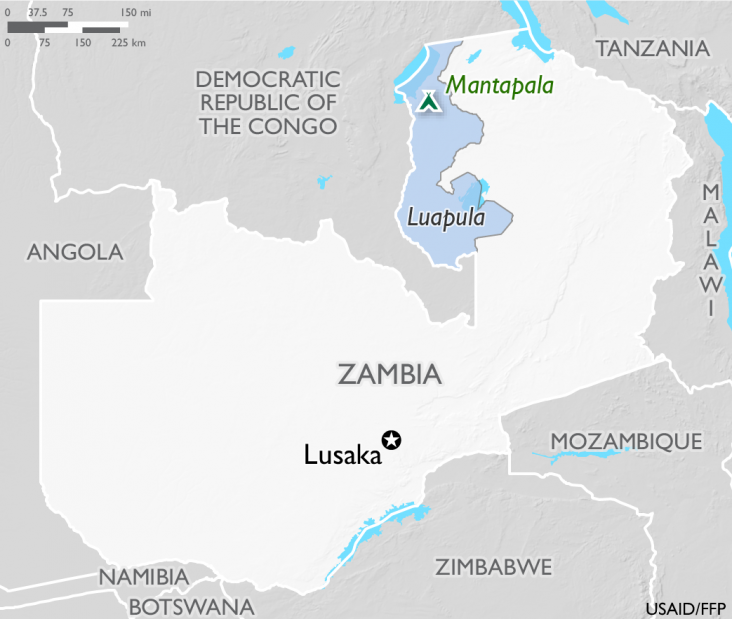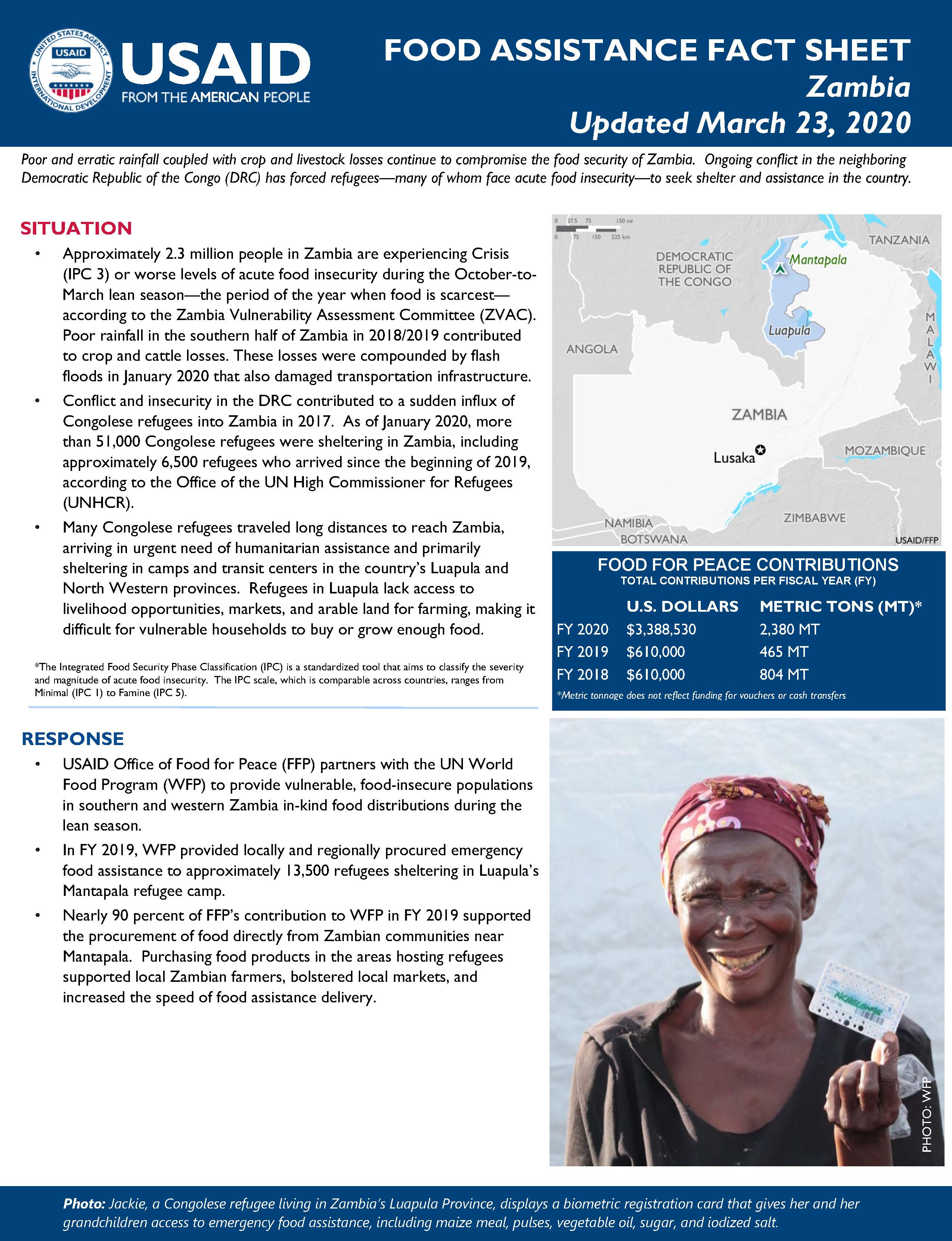Home » What We Do » Agriculture and Food Security » Food Assistance » Where We Work » Food Assistance Fact Sheet - Zambia
- What We Do
- Agriculture and Food Security
- Democracy, Human Rights and Governance
- Economic Growth and Trade
- Education
- Environment and Global Climate Change
- Gender Equality and Women's Empowerment
- Global Health
- Humanitarian Assistance
- Transformation at USAID
- Water and Sanitation
- Working in Crises and Conflict
- U.S. Global Development Lab
Speeches Shim

March 23, 2020
Poor and erratic rainfall coupled with crop and livestock losses continue to compromise the food security of Zambia. Ongoing conflict in the neighboring Democratic Republic of the Congo (DRC) has forced refugees—many of whom face acute food insecurity—to seek shelter and assistance in the country.
Situation
- Approximately 2.3 million people in Zambia are experiencing Crisis (IPC 3) or worse levels of acute food insecurity during the October-to-March lean season—the period of the year when food is scarcest— according to the Zambia Vulnerability Assessment Committee (ZVAC). Poor rainfall in the southern half of Zambia in 2018/2019 contributed to crop and cattle losses. These losses were compounded by flash floods in January 2020 that also damaged transportation infrastructure.
- Conflict and insecurity in the DRC contributed to a sudden influx of Congolese refugees into Zambia in 2017. As of January 2020, more than 51,000 Congolese refugees were sheltering in Zambia, including approximately 6,500 refugees who arrived since the beginning of 2019, according to the Office of the UN High Commissioner for Refugees (UNHCR).
- Many Congolese refugees traveled long distances to reach Zambia, arriving in urgent need of humanitarian assistance and primarily sheltering in camps and transit centers in the country’s Luapula and North Western provinces. Refugees in Luapula lack access to livelihood opportunities, markets, and arable land for farming, making it difficult for vulnerable households to buy or grow enough food.
Food Assistance Fact Sheet - Zambia ![]() (pdf - 283k)
(pdf - 283k)
Response
- USAID Office of Food for Peace (FFP) partners with the UN World Food Program (WFP) to provide vulnerable, food-insecure populations in southern and western Zambia in-kind food distributions during the lean season.
- In FY 2019, WFP provided locally and regionally procured emergency food assistance to approximately 13,500 refugees sheltering in Luapula’s Mantapala refugee camp.
- Nearly 90 percent of FFP’s contribution to WFP in FY 2019 supported the procurement of food directly from Zambian communities near Mantapala. Purchasing food products in the areas hosting refugees supported local Zambian farmers, bolstered local markets, and increased the speed of food assistance delivery.
Food for Peace Contributions
Total Contributions:
| U.S. Dollars | Metric Tons* | |
|---|---|---|
| Fiscal Year 2020 | $3,388,530 | 2,380 MT |
| Fiscal Year 2019 | $610,000 | 465 MT |
| Fiscal Year 2018 | $610,000 | 804 MT |
*Metric tonnage does not reflect funding for vouchers or cash transfers.


Comment
Make a general inquiry or suggest an improvement.